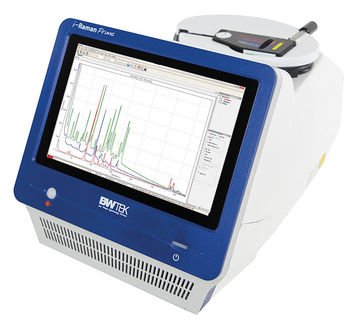Anagrelide (Agrylin®/Xagrid®, Shire) is a drug used for the treatment of essential thrombocytosis (ET; essential thrombocythemia). It also has been used in the treatment of chronic myeloid leukemia. [1]
Mechanism
It works by inhibiting the maturation of megakaryocytes into platelets.[2] The exact mechanism of action is unclear, although it is known to be a potent (IC50 = 36nM) inhibitor of phosphodiesterase-III.
Uses
According to a 2005 Medical Research Council randomized trial, the combination of hydroxyurea with aspirin is superior to the combination of anagrelide and aspirin for the initial management of ET. The hydroxyurea arm had a lower likelihood of myelofibrosis, arterial thrombosis, and bleeding, but it had a slightly higher rate of venous thrombosis.[3]
Side-effects
Common side effects are headache, diarrhea, unusual weakness, nausea and dizziness.
References
- ^ Voglová J, Maisnar V, Beránek M, Chrobák L (2006). "[Combination of imatinib and anagrelide in treatment of chronic myeloid leukemia in blastic phase]" (in Czech). Vnitr̆ní lékar̆ství 52 (9): 819-22. PMID 17091608.
- ^ Petrides PE (2006). "Anagrelide: what was new in 2004 and 2005?". Semin. Thromb. Hemost. 32 (4 Pt 2): 399-408. doi:10.1055/s-2006-942760. PMID 16810615.
- ^ Harrison CN, Campbell PJ, Buck G, Wheatley K, East CL, Bareford D, Wilkins BS, van der Walt JD, Reilly JT, Grigg AP, Revell P, Woodcock BE, Green AR; United Kingdom Medical Research Council Primary Thrombocythemia 1 Study. Hydroxyurea compared with anagrelide in high-risk essential thrombocythemia. N Engl J Med 2005;353:33-45. PMID 16000354.
| Chemotherapeutic agents/Antineoplastic agents (L01) |
|---|
| Alkylating and alkylating-like agents | Nitrogen mustards: (Chlorambucil, Chlormethine, Cyclophosphamide, Ifosfamide, Melphalan). Nitrosoureas:(Carmustine, Fotemustine, Lomustine, Streptozocin). Platinum (alkylating-like): (Carboplatin, Cisplatin, Oxaliplatin, BBR3464). Busulfan, Dacarbazine, Procarbazine, Temozolomide, ThioTEPA, Uramustine |
|---|
| Antimetabolites | Folic acid: (Aminopterin, Methotrexate, Pemetrexed, Raltitrexed). Purine:(Cladribine, Clofarabine, Fludarabine, Mercaptopurine, Pentostatin, Thioguanine). Pyrimidine:(Capecitabine, Cytarabine, Fluorouracil, Floxuridine, Gemcitabine) |
|---|
| Spindle poison/mitotic inhibitor | Taxane: (Docetaxel, Paclitaxel). Vinca: (Vinblastine, Vincristine, Vindesine, Vinorelbine). |
|---|
| Cytotoxic/antitumor antibiotics | Anthracycline family: (Daunorubicin, Doxorubicin, Epirubicin, Idarubicin, Mitoxantrone, Valrubicin) - streptomyces (Actinomycin, Bleomycin, Mitomycin, Plicamycin) - Hydroxyurea |
|---|
| Topoisomerase inhibitors | Camptotheca: (Camptothecin, Topotecan, Irinotecan), Podophyllum:(Etoposide, Teniposide) |
|---|
| CI monoclonal antibodies | Receptor tyrosine kinase (Cetuximab, Panitumumab, Trastuzumab) - CD20 (Rituximab, Tositumomab) - other (Alemtuzumab, Bevacizumab, Gemtuzumab) |
|---|
| Photosensitizers | Aminolevulinic acid, Methyl aminolevulinate, Porfimer sodium, Verteporfin |
|---|
| Tyrosine kinase inhibitors | Dasatinib, Erlotinib, Gefitinib, Imatinib, Lapatinib, Nilotinib, Sorafenib, Sunitinib |
|---|
| Other | retinoids (Alitretinoin, Tretinoin) - Altretamine, Amsacrine, Anagrelide, Arsenic trioxide, Asparaginase (Pegaspargase), Bexarotene, Bortezomib, Denileukin diftitox, Estramustine, Ixabepilone, Masoprocol, Mitotane |
|---|
|







